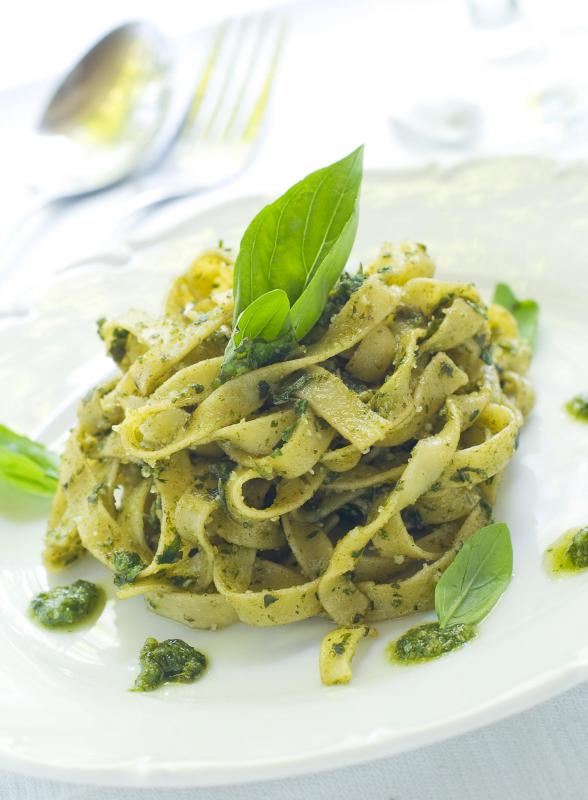At WiseGEEK, we're committed to delivering accurate, trustworthy information. Our expert-authored content is rigorously fact-checked and sourced from credible authorities. Discover how we uphold the highest standards in providing you with reliable knowledge.
What is Pistou?
Pistou is a paste made from raw garlic and basil, and it is a staple of Provencal French cooking. It is similar to the better known Italian pesto, made by the same method using many of the same ingredients and used in a similar manner. Often, the paste is served with bread and pasta or as a condiment for meat or fish, but it is perhaps most often associated with soupe au pistou, a light soup similar to minestrone.
Like pesto, pistou is made by crushing together raw ingredients and mixing in oil to reach the desired consistency. In fact, the word “pistou” comes from a Provencal dialect and means “pounded.” Traditionally, garlic, basil, salt and olive oil are ground together using a mortar and pestle to make a smooth paste. A food processor can be used, especially for large quantities, but most people agree that grinding by hand produces a better paste.

Of course, as with many recipes, secret ingredients and variations abound. Pine nuts and parmesan cheese, which are essential ingredients in pesto, sometimes are included in pistou as well. Other nuts and hard cheeses can be used as well, and ingredients ranging from tomatoes to ham have been included in individual recipes. Some recipes even replace the basil with other herbs such as parsley.

When preparing a meal, pistou is added at the very end. Stirring it into pasta or serving it with fish or meat gives the dish a fragrant finish. Cooking will dull the flavor and color. Even when preparing hot dishes such as soupe au pistou, the paste added no more than 20 minutes before serving. To better preserve the flavor, it often is stirred into the soup at the table as a condiment.
Ideally, the paste should be used when it is made, but it will keep in the refrigerator for a few days. It will, however begin to lose its flavor during that time. If longer storage is anticipated, freezing is the best option, separating the batch into easy-to-use measured portions. Frozen paste will need to thaw naturally, though, and microwave defrosting is not an option.
Pesto and pistou most likely share a common origin. Early references date to the first century B.C. Although still quite similar, they remain distinct, primarily because of pesto’s inclusion of pine nuts and parmesan as essential ingredients. Pistou, on the other hand, generally has a stronger garlic flavor and might use more salt for a distinctively Provencal taste.
AS FEATURED ON:
AS FEATURED ON:












Discuss this Article
Post your comments